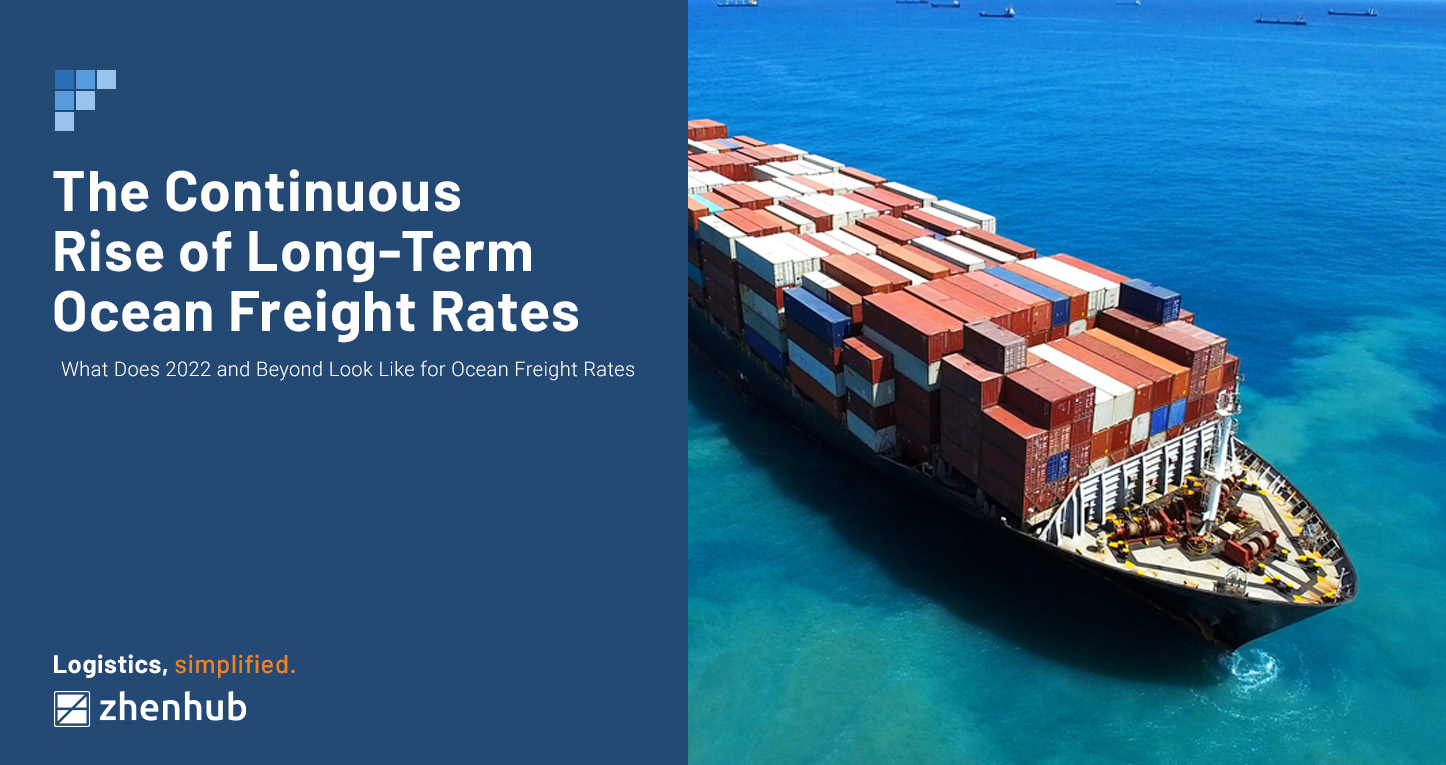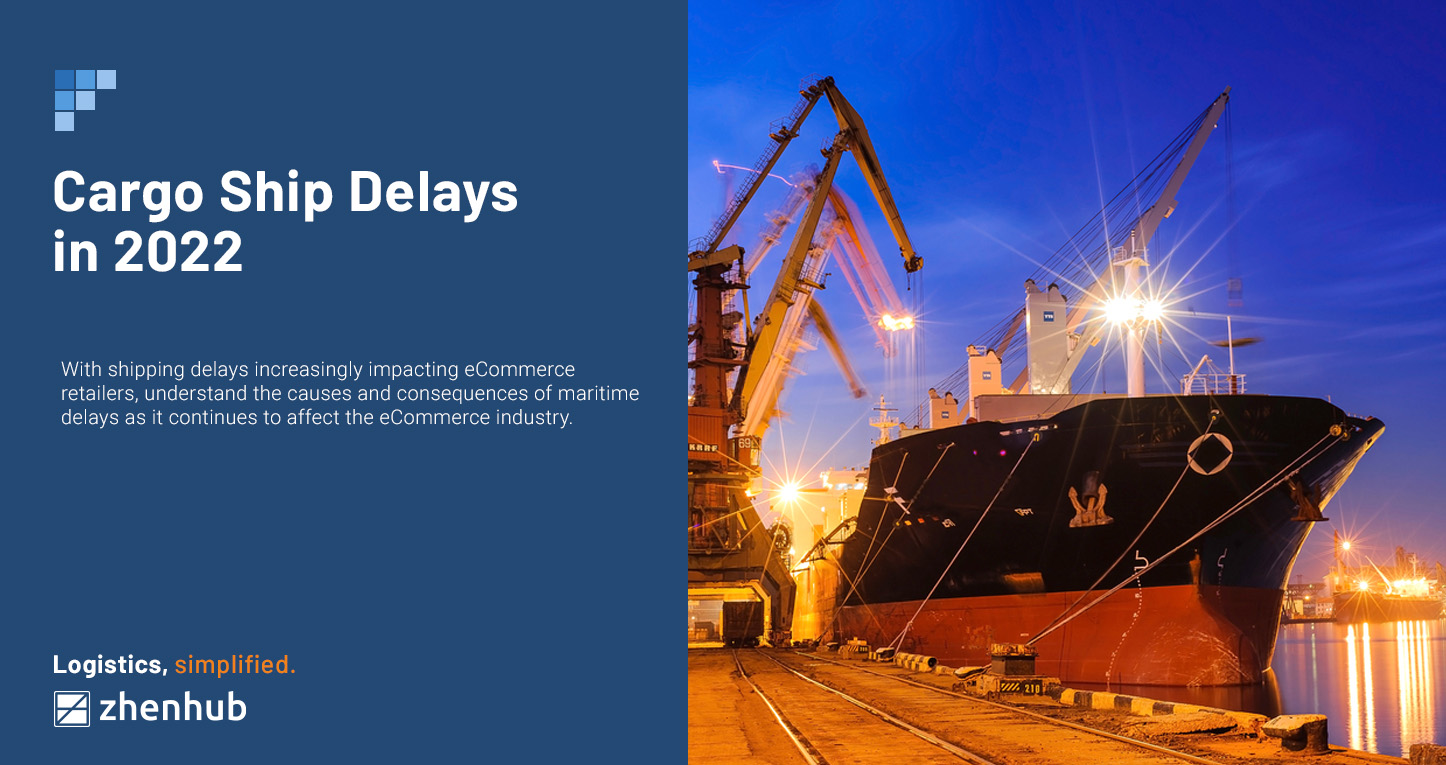
The Continuous Rise of Long-Term Ocean Freight Rates
Time to read: 4 minutes
The 2020 COVID-19 crisis, aka the global pandemic, disrupted all industries. It created a worldwide domino of events that ushered in the new normal for better or worse. As the world slowly adapts to this new world reality, we see more disruptions brought to the fore. The global pandemic has affected the logistics and supply chain sector, particularly ocean freight rates.
Over the last two years, this concern has been hounding the international trading market. As COVID-19 spreads and gets contained, global ports start and halt operations at conflicting periods. The meteoric rise in eCommerce transactions also put more strain on the global supply chain. The virus exacerbated the situation to a breaking point. Experts agree that this perfect storm drove ocean freight prices to new heights.
In navigating through 2022 and beyond, eCommerce retailers can benefit from the experts on ocean freight. This article explores long-term ocean freight rates, including the leading causes for the exponential rise in cost, as well as an outlook on what lies ahead in the world of logistics and supply chains.
Ocean Freight Rates Crisis: A Snapshot
Imbalances with international trading have been an ongoing problem for decades. However, the first significant leap in ocean freight prices happened largely due to the Suez Canal crisis in March of 2021. Ever Given, the ship that caused the blockage along the international trading route was designed to alleviate the current shipping issues. Most freight companies have chosen to employ larger vessels to accommodate the demand. Unfortunately, global ports weren’t able to keep up with the shifts:
“These massive ships can deliver more per voyage, but ports like Los Angeles or Long Beach—they weren’t made to accommodate ships of that size. Look at what happened earlier this year with the Ever Given, which stalled for six days and blocked traffic in the Suez Canal. These manufacturers thought bigger ships would be better for the bottom line, but the ports weren’t renovated to handle them,” explains journalist Rachel Premack.
The six-day blockage is the singular straw that broke the camel’s back. According to experts, the situation wouldn’t ease anytime soon. Some predict that the heavy backlog will be extending to 2023. Unfortunately, at that point, consumers would begin feeling the rise of ocean freighting costs:
“Higher container freight rates will [also] have a sizeable impact on consumer prices. If container freight rates remain at their current high levels, then in 2023, global consumer prices are projected to be 1.5 per cent higher than they would have been without the freight rate surge. The impact is expected to be more significant for smaller economies that depend heavily on imported goods for much of their consumption needs. In SIDS, the cumulative increase in consumer prices is expected to be 7.5 percent and in the Least Developed Countries (LDCs) 2.2 percent” read a United Nations Report on Maritime Transport.
Key Factors that Affect Ocean Freight Rates
International shipping has been in turmoil for years. As mentioned earlier, the COVID-19 crisis only exacerbated the situation, exponentially increasing ocean freight expenses. Supply chains were severely affected, especially at the height of the pandemic in 2020, and the trend will continue well into 2022.
Understanding the key factors affecting international shipping prices is the first step in mitigating costs. Retailers must consider the ever-changing tides in their operational decisions.
The global shipping container shortage is one of the biggest reasons for the continuous rise of ocean freight rates. China, the world’s leading manufacturing hub, opened its ports sooner than the rest of the world. Unfortunately, most of the shipping containers needed to transport goods are stuck in ports that remain closed.
Around November 2021, the shortage softened, with only 11% of the world’s shipping containers held stranded at different ports around the globe. The rate is lower than pre-pandemic heights but, it is still a significant departure from the pre-pandemic shortage levels of 7%.
“The softening in prices we saw at the end of September is a false dawn. What we see from a big-data perspective is that things are not getting materially better.”
Aside from the container shortage issue, ocean freight rates are at an all-time high because there are few alternatives to this mode of transportation. Over 90% of the world’s goods are transported by sea. Retailers that deal with high-cost items can recoup the cost of air or train freights on the price of their products. But retailers cannot apply the same principle to lower value inventory such as RTW apparel, household merchandise, and personal care products.
The skyrocketing cost of ocean freight shipping has also brought up the issue of monopolization and profiteering. Experts agree that the combination of lax government guidelines as well as consolidated power has resulted in the current “cartel-like” rates:
“In 2000, the largest 10 shipping companies controlled 51% of the market. Today, it is more than 80%, leaving domestic manufacturers who need to export goods at these large foreign companies’ mercy. This has let powerful container shippers charge exporters exorbitant fees for time their freight was sitting waiting to be loaded or unloaded. These fees, called “detention and demurrage charges,” can add up to hundreds of thousands of dollars” read a statement from the White House release in July of 2021.
There is no denying that operating an eCommerce business in 2022 is challenging. Retailers must strike a balance between taking advantage of the demand and managing the rising operational costs. It’s in your best interest to find a logistics partner that can help you navigate through such uncertain times & find success in such a cutthroat industry. However, not all third-party logistics providers are created equal. It is vital to find the right one that suits your company’s needs.
ZhenHub is a world leader in shipping and logistics. We offer tech-based logistics products that provide solutions to every part of the supply chain. Amidst all the uncertainty, we guarantee that we can seamlessly deliver packages from point A to point B. Reach out to us today or request a free quote to learn what we can do for your business operations


